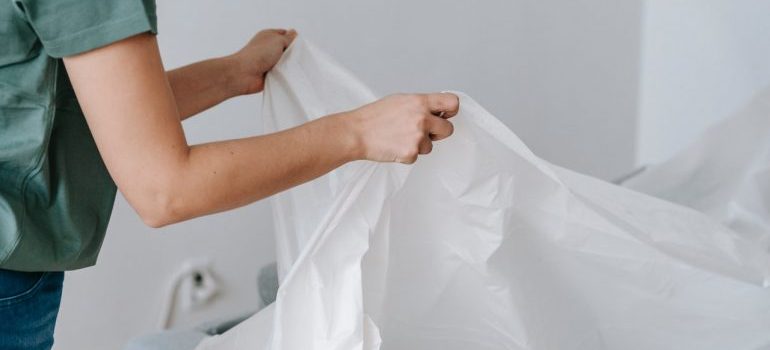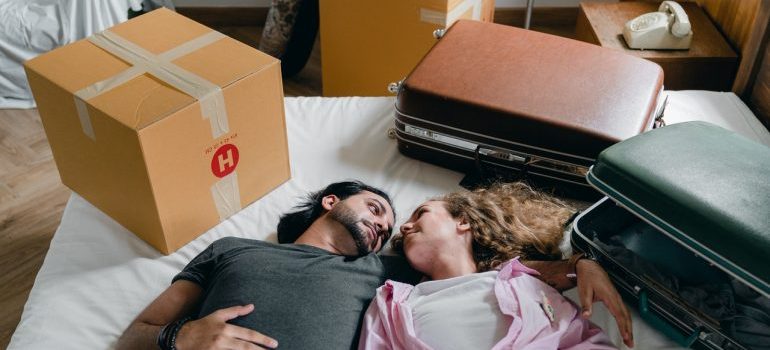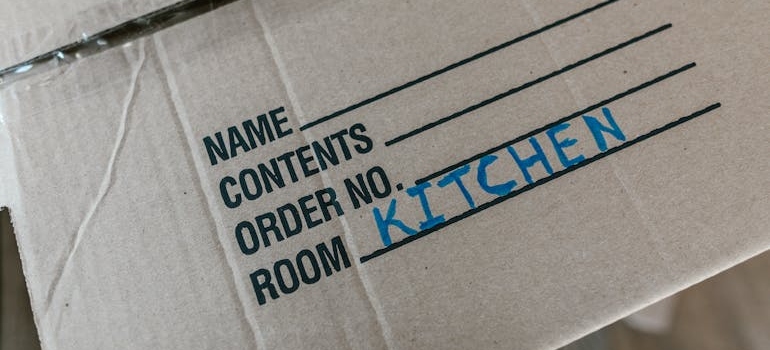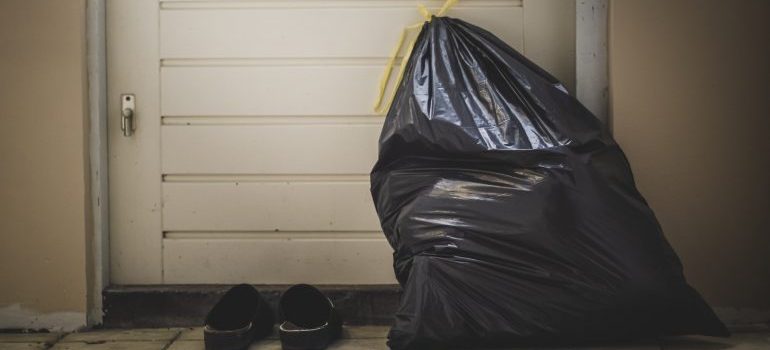At-home Packing Supplies That You Can Improvise With
There’s no denying moving can get pricey. Just when you think you’ve covered the big stuff, along come the small expenses—packing tape, bubble wrap, boxes—that quietly inflate your budget. But here’s something most people overlook: your home is already stocked with items that can make packing easier and cheaper. Instead of running out to buy specialized supplies, take a look around. Those old towels, grocery bags, and empty containers you barely think about? They’re now your secret weapons. This guide by the best movers in Boise is packed with resourceful, practical tips to help you turn everyday household items into powerful at-home packing supplies. With the right strategy, your home can do more than hold your stuff—it can help move it too.
Think Outside the Box (Literally and Figuratively)
Using what you already own not only saves money but also makes your move more eco-friendly. Packing doesn’t have to mean stacks of store-bought boxes and rolls of shiny tape. It’s all about working smarter, not harder. Some of the best packing materials don’t even look like packing materials. You probably walk past them every day without realizing their value.
Start by rethinking how you define “packing supplies.” That suitcase tucked in the closet? It can carry books or kitchen gear. The reusable shopping bags by the door? Perfect for clothes, shoes, and odds and ends. Even your laundry basket can haul more than just dirty socks—it’s sturdy and made for hauling loads.
Many items that serve other purposes in your daily life are surprisingly effective in protecting, carrying, and organizing your belongings. Using them for packing also cuts down on waste and keeps more money in your pocket. You’ll reduce the number of new materials you need to buy and make better use of what you already own. If you’re unsure about whether certain belongings need special handling, reach out to your local movers in Boise for advice. They’ll know when improvised materials are fine—and when it’s worth investing in professional-grade supplies.

Wrap It Up Right: DIY Padding Solutions
Nothing ruins a move like opening a box to find your favorite glassware shattered or a cherished photo frame cracked. That’s why padding is one of the most important parts of packing—but it doesn’t mean you have to buy bubble wrap by the yard.
Take a walk through your linen closet or dresser drawers. You’ve got all the padding you need. Towels, blankets, and t-shirts are ideal for wrapping around fragile items. Socks make excellent protectors for glasses, mugs, and small vases. Even oven mitts and potholders can cushion delicate kitchen tools and electronics.
The best part? These are all things you’ll pack anyway. When using them to protect other belongings, you’re solving two problems at once—saving space and cutting costs. Just be sure to label boxes clearly so you’re not digging through your “kitchenware” box wondering where your favorite hoodie went. If you’re packing particularly valuable or fragile items, a quick conversation with your mover about packing supplies in Boise can help you decide where to stick with DIY materials and where to use more specialized packing gear.
Boxes You Already Own: The Ultimate Hack
Before you head out to buy cardboard boxes, take inventory of the ones you already have in disguise. Your home is filled with strong, reusable containers that can handle the move just as well—if not better—than any store-bought box. Suitcases are the most obvious place to start. They’re built for travel, have wheels, and can carry a surprising amount of weight. Use them for heavy items like books, canned goods, or even electronics. Backpacks and duffel bags are great for clothes, linens, and lightweight gear.
Plastic storage bins with lids? They’re not just for organizing—they’re perfect for stacking and safely transporting items. Even dresser drawers can be wrapped in plastic and moved with their contents inside, saving you packing time and boxes. These ready-to-go containers not only reduce the number of supplies you need, they also make unpacking at your new place a breeze. Plus, well-packed containers help professional movers work faster, which can save you time and money on a moving day.
Improvised Packing Supplies You’ll Find at Home
Take a moment to look around your home—you’re surrounded by potential packing helpers just waiting to be used. From kitchen drawers to closets and storage corners, everyday items can serve new, practical purposes while moving to Idaho. Improvising with what you have is efficient and cost-effective. And let’s be honest: no one wants to spend extra money on stuff that will get tossed right after unpacking. Here’s where the real creativity kicks in.
Here are some clever at-home packing supplies hiding in plain sight:
- Towels and washcloths – Wrap around dishes, pans, or electronics for soft, reusable padding.
- Socks – Slide over glassware, perfume bottles, or vases to protect from chips and cracks.
- Grocery bags – Bunch up as filler to prevent shifting inside boxes, especially with oddly shaped items.
- Trash bags – Use for packing clothing, bedding, or plush items—they’re lightweight and fit almost anywhere.
- Laundry baskets – Fill with shoes, tools, or books; they’re sturdy and have handles for easy transport.
- Tupperware – Keep small electronics, cords, or office supplies organized and contained.
- Shower caps – Stretch over the soles of shoes to keep other items clean in shared boxes or bags.
- Rubber bands – Hold cables, kitchen tools, or pens together so they don’t scatter during transit.
- Newspapers and magazines – Crumple up to fill space around breakables and stop movement.
- Scarves – Wrap around decorative items, candles, or jewelry boxes for a soft protective layer.
Improvising isn’t just a budget hack—it’s smart and sustainable. These solutions cut waste and repurpose what you already own. Plus, when your boxes are packed securely with soft padding and stable containers, it helps movers do their job more efficiently and safely.

Use What You Pack as Packing Materials
Many household items can serve double duty—both as personal belongings and as at-home packing supplies and padding. This approach reduces the need for extra boxes and specialized packing materials while keeping fragile items secure. Tightly rolled t-shirts or sweaters can be wrapped around kitchenware, framed photos, or electronics.
Use jeans or hoodies to cushion the sides and bottoms of boxes carrying breakables. Bath towels, blankets, and duvets are effective for larger items like TVs or monitors—fold them into thick layers and wrap them tightly around the item before boxing or securing them in place. Shoes can be packed toe-to-toe in bags, and their hollow interiors used to hold smaller, fragile pieces wrapped in socks.
This technique minimizes wasted space, reduces movement within boxes, and can significantly lower the total number of boxes required. When packed efficiently, your shipment weighs less and takes up less volume—important factors when you’re paying for weight or space.
Professional movers often suggest this method for short and medium-distance moves, where personal supervision and shorter transit times reduce the risk of damage. Just be sure to secure everything tightly and label boxes to avoid misplacing everyday essentials.
Labeling Without the Fancy Supplies
Clear labeling plays a critical role in both the moving and unpacking process. Without it, boxes end up in the wrong rooms, fragile items may get mishandled, and you’ll waste time opening multiple boxes to find a single item. A good labeling system doesn’t require store-bought stickers or specialized materials—just a logical approach, consistency, and basic supplies.
Use What You Have
Start with durable tape like masking tape, painter’s tape, or packing tape applied in a visible area on the box. Avoid transparent tape over handwriting, as glare can make it hard to read. Use a thick permanent marker for bold, legible writing that won’t smudge or fade in transit. Don’t use ballpoint pens—they’re too light to see from a distance.
Be Specific and Consistent
Clearly write the room destination (“Kitchen,” “Master Bedroom,” “Bathroom 2”), and follow it with a brief content description, such as “Utensils + Plates” or “Winter Clothing.” Label at least two sides and the top of the box so the information is visible even when boxes are stacked or facing a wall.
Color Coding for Speed
To speed up sorting and unpacking, implement a color-coding system using colored pens, markers, or even colored tape. For example:
- Blue = Kitchen
- Red = Bedroom
- Green = Bathroom
- Yellow = Living Room
If you’re using plain paper or recycled scraps like cereal boxes or folders, just be sure the material is securely taped and won’t fall off during the move.

Add Symbols and Special Notes
Include symbols when needed. Use arrows to indicate “This Side Up,” write “FRAGILE” in red on boxes with breakables, and note “OPEN FIRST” on essential boxes like toiletries, tools, or chargers. A numbered system can also help you track how many boxes each room has (e.g., “Box 1 of 4 – Kitchen”).
A well-labeled box helps movers place items in the correct room without asking, saves time during unloading, and makes unpacking far more efficient. It also reduces the chance of damage or loss due to mishandling or misplacement. Investing a little time in labeling pays off significantly once you’re setting up in your new home.
Safety First: When to Use the Real Thing
Improvising is smart, but not every item should rely on DIY packing. Some belongings deserve the real deal—specialty moving boxes in Boise, professional padding, or reinforced containers—especially if they’re fragile, valuable, or hard to replace.
When to Use Specialty Materials
High-risk items such as laptops, tablets, gaming consoles, glass-front artwork, heirloom china, and large mirrors require more than improvised padding. These items are not only fragile—they’re often valuable or difficult to replace. For electronics, use anti-static bubble wrap or foam-lined cases to prevent shock and moisture damage.
Art and mirrors should be packed in telescoping picture boxes or mirror cartons with corner protectors and layered foam inserts to absorb impact. Dish packs, which have double-walled construction, are ideal for packing fragile kitchenware. Wrapping delicate items in towels may work for short moves, but for long-distance or international shipping, professional-grade materials dramatically reduce the risk of breakage.
Reach out to your moving company to ask what truly needs pro-level materials and what you can safely wrap up with what you already own. Most movers are happy to help you strike the right balance between saving money and keeping everything protected. Combining clever improvisation with a few essential purchases gives you the best of both worlds—budget-conscious packing that doesn’t cut corners where it matters most.
Protecting Important Documents
Vital records such as passports, birth certificates, medical records, financial documents, and school transcripts require special care during a move. Pack them in a sealed, waterproof pouch or a lockable, fire-resistant file box to guard against spills, rain, or unexpected exposure to moisture.
Keep this container with you during the long-distance moving from Idaho to Washington, rather than in the moving truck, to reduce the risk of loss or delay. It’s also wise to scan key documents and store digital copies securely in cloud storage or an encrypted drive for backup access if needed.

A Resourceful Move Starts at Home
Moving doesn’t have to drain your wallet—or your patience. You’ve got everything you need to start packing smartly, and it’s probably right in your own home. From towels and suitcases to grocery bags and shower caps, your everyday items are ready to step up and simplify your move.
Improvising with at-home packing supplies means less waste, fewer last-minute store runs, and more money in your pocket. You’ll save time by using what’s already on hand, and you’ll reduce stress by knowing your belongings are safely packed—even if bubble wrap never enters the picture.
Start collecting supplies early, label everything clearly, and don’t be afraid to get creative. The best moving strategies aren’t always about spending more—they’re about using what you’ve got to make things easier. So go ahead—open those drawers, scan your shelves for at-home packing supplies, and see the packing power hiding in plain sight. Your move just got a whole lot smarter.

